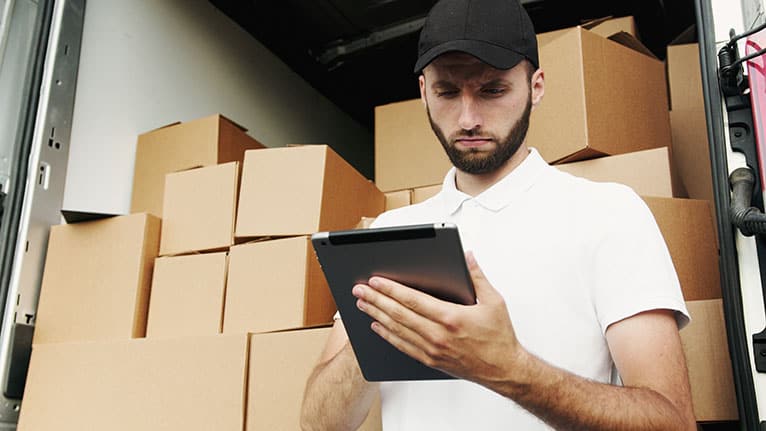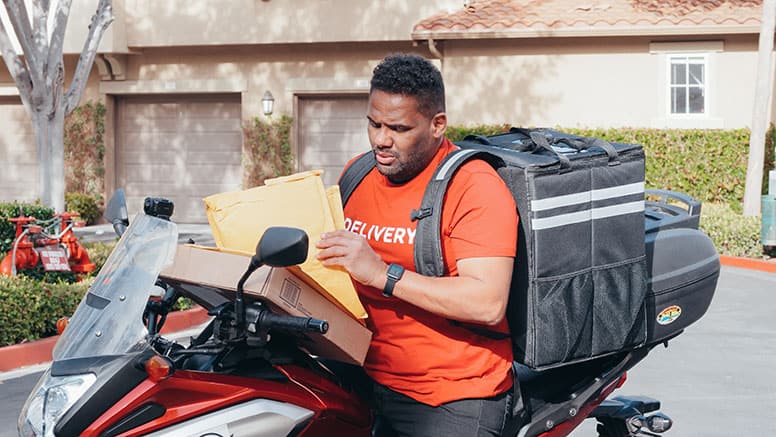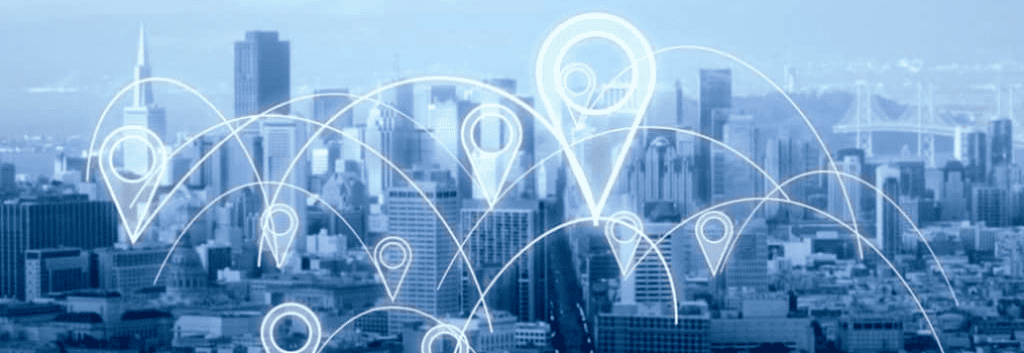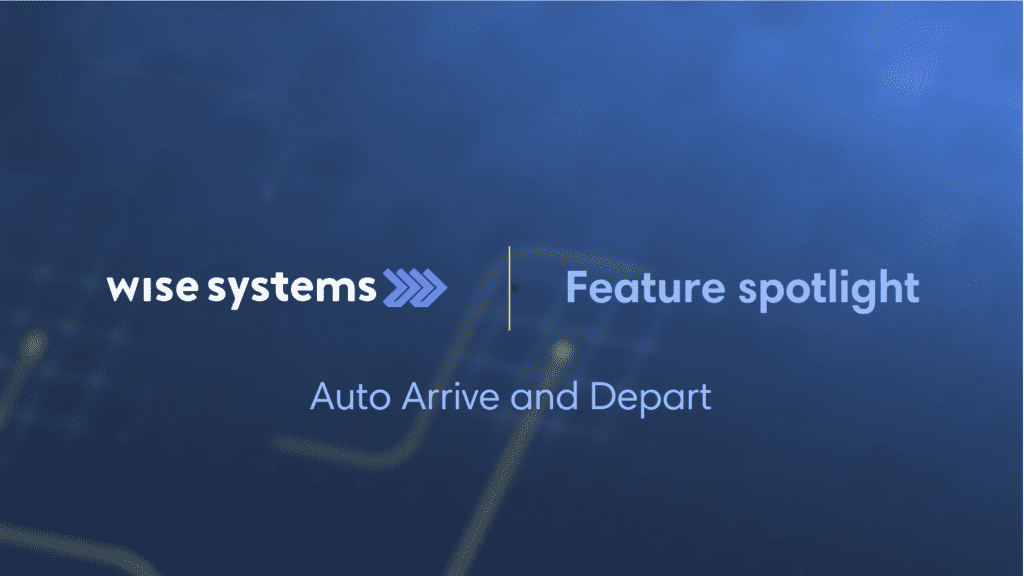
What is Delivery Automation? Definition, Benefits & More

Wise Systems
What is Delivery Automation? Definition, Benefits & More

Wise Systems

In today’s fast-paced and increasingly digital world, customers expect next-day or same-day delivery with complete visibility. Efficient last-mile delivery is crucial for businesses to meet these expectations, maximize cost efficiency, and remain competitive in the modern marketplace. To optimize this process, many companies are turning to delivery automation.
This article provides a comprehensive overview of delivery automation, including what delivery automation is, how it works, its benefits and challenges, and more.
In this article:
- What is Delivery Automation?
- How Delivery Automation Works
- Benefits of Delivery Automation
- Delivery Automation Challenges
- Is Delivery Automation Right for Your Business?
- Frequently Asked Questions
What is Delivery Automation?
Delivery automation utilizes technology to streamline and optimize the last-mile dispatch and routing processes. It involves automating various tasks and decision-making activities involved in the delivery process, such as order assignment, route optimization, scheduling, tracking, and communication.
How Delivery Automation Works

Delivery automation relies on advanced software systems that leverage artificial intelligence, route optimization algorithms, and machine learning models to integrate, automate, and optimize core functions such as:
- Order Assignment: Algorithms analyze incoming orders and assign them to the most suitable drivers or vehicles based on predefined criteria like proximity, capacity, and priority.
- Route Optimization: Route optimization algorithms consider factors such as traffic conditions, delivery time windows, and vehicle capacity to create the most efficient delivery routes, reducing fuel consumption and minimizing delivery time, even for large fleets.
- Real-time Insights: Delivery automation gives dispatchers visibility and insight for faster, smarter decision-making while providing drivers with intuitive tools for end-to-end navigation.
- Team Coordination: Dispatchers and managers can track deliveries and drivers in real-time, keep tabs on specific routes or drivers throughout the day, and receive automated notifications and alerts for delivery updates, delays, and other relevant information.
- Customer Communication: One of the most important elements of delivery operations today, delivery automation solutions provide tools to keep delivery recipients informed about the location and status of their deliveries and ETAs. These tools may include automated SMS delivery notifications and real-time tracking for customers to track the precise location of their packages.
Fleet Management: Some delivery automation solutions provide real-time analytics on fleet performance, enabling fleet managers to monitor driver performance, vehicle utilization, fuel consumption, and delivery metrics.
Delivery automation offers numerous benefits to companies operating in the last-mile delivery space. Some key advantages of delivery automation include:
- More Time for Higher Value Tasks: By automating repetitive tasks and applying computing power to them, delivery automation frees up your team to focus on higher-value tasks like customer service and exception management.
- Enhanced Efficiency: Automating repetitive tasks also reduces human error and enables faster and more accurate order fulfillment through route optimization. Improved efficiency results in reduced mileage, fuel consumption, and delivery times.
- Improved Customer Satisfaction: Delivery automation improves accuracy and efficiency and provides real-time information and notifications regarding delivery status and ETAs. Faster delivery times and transparency help to build customer trust and loyalty, improve the customer experience, and increase customer satisfaction.
- Cost Optimization: Optimized routes reduce mileage and fuel consumption, resulting in cost savings, and better resource utilization helps to improve overall efficiency.
- Scalability and Flexibility: Delivery automation solutions are scalable, enabling businesses to handle increasing order volumes without significant resource investments. Additionally, these solutions enable businesses to adapt readily to changing customer demands and market conditions. They also allow operations team to efficiently accommodate new business.
Delivery Automation Challenges

Delivery automation offers many benefits, but there are challenges associated with implementing a delivery automation solution, including:
- Complexity: Delivery automation may initially seem more complex compared to manual processes. It also requires inputs from multiple data sources.
- Change Management: Introducing delivery automation means teams must adapt to new processes. Drivers will likely be using new applications and their routes may change. Yet they’ll gain more control and predictability in their schedules.
Is Delivery Automation Right for Your Business?
Delivery automation can benefit wholesale distribution companies, retail distribution operations, parcel and courier services, and other industries – particularly those that manage high order volumes and multiple stops per day, or those that have complex delivery requirements.
The Wise Systems delivery automation platform makes adapting easy by offering clean, intuitive cloud-based applications for everyone in the process – planners, dispatchers, drivers, managers and delivery recipients. It also supports both static and dynamic routing, as well as a static + dynamic hybrid approach. The hybrid approach enables you to have a mix of fixed stops on each route each day, and add dynamic stops to each route.
With the Wise Systems platform, you can also leverage geographic zones to keep drivers in fixed areas, if that’s a goal. Request a demo to learn how Wise Systems can help you optimize your delivery processes.
Frequently Asked Questions
How do you optimize delivery time?
Implementing a delivery automation solution is the best way to optimize delivery time. These systems ingest data from multiple sources to optimize routes considering factors such as:
- Customer time windows
- Driver availability and proximity
- Weather conditions
- Traffic conditions
- Vehicle capacity and weight limits
- Customer cancellations
- New orders or order changes
- Delivery windows
By leveraging artificial intelligence and machine learning, delivery automation solutions can consider all of these factors simultaneously to plan the ideal routes.
How do you monitor delivery performance?
There are several key performance indicators (KPIs) for monitoring delivery performance, including:
- On time deliveries (OTD) by fleet, route, or driver
- Number of deliveries
- Order accuracy
- Cost of delivery
Other variables that are helpful in monitoring fleet and delivery performance include driver task volumes and planned vs. actual route comparisons. It’s also useful to assess the effectiveness of dispatchers’ customizations.
What factors can impact delivery times?
Many factors can impact delivery time, such as:
- Non-optimized routes
- Weather conditions
- Construction
- Traffic conditions
- Lost packages
- Driver error
- Vehicle issues
- Order errors
- Failed delivery attempts (such as outside the delivery window or designated receiver not available.)
Frequently Asked Questions
What are the key benefits of a delivery automation platform?
A delivery automation platform offers several key benefits, including:
- Improved operational efficiency: By automating routine processes, a delivery automation platform enables faster and more reliable end-to-end last-mile delivery operations and improves fleet utilization.
- Scales manual processes: As order volumes increase, the work of the dispatcher becomes mathematically overwhelming, necessitating next-generation technology to manage the increasing complexity and enabling dispatchers to manage the exceptions that require expert intervention.
- Reduced manual errors: A delivery automation platform reduces human error, supporting accuracy and efficiency.
- Optimized route planning: A delivery automation platform provides optimized routes, which helps to improve fuel efficiency, save time by avoiding traffic congestion and other travel delays, improve resource utilization, and ensure prompt delivery.
- Real-time tracking and visibility: Both businesses and customers can track deliveries in real-time with a delivery automation platform, providing increased transparency that keeps customers up to date and boosts customer satisfaction.
- Valuable data analytics for performance insights: A data automation platform provides valuable data analytics that help businesses make data-driven decisions, such as identifying the most cost-effective routes or drivers.
- Enhanced customer satisfaction: Real-time delivery tracking coupled with faster, error-free deliveries boosts customer satisfaction.
How can a delivery automation platform save my business money?
A delivery automation platform can save your business money in several ways:
- Minimizes manual labor and associated costs
- Optimizes route planning to reduce fuel expenses
- Reduces costly errors like missed or incorrect deliveries
- Provides data-driven insights to optimize overall delivery operations and resource allocation
Which industries can benefit most from a delivery automation platform?
A delivery automation platform can benefit various industries that involve product or service deliveries. Industries such as e-commerce, retail, logistics and transportation, food delivery, healthcare, pharmaceuticals, and wholesale distribution can particularly benefit from the streamlined operations, improved customer experience, and cost savings offered by a delivery automation platform.
However, almost any industry that relies on efficient deliveries can find value in implementing such a platform.





